Performance marketing has gained more and more traction. But what does it actually involve? After all, aren’t all marketing firms expected to deliver the goods?
Results are what performance marketing is based on. A performance marketing agency only gets paid if they are successful in achieving the client’s intended objectives, regardless of whether you want to track sales, organic traffic, leads, or downloads.
You’re not entirely off base if you believe it sounds a lot like affiliate marketing. Performance marketing, which can also encompass services like email marketing and influencer marketing, includes affiliate marketing as one of its components.
Despite this, the aim of this paper is not to examine performance marketing in detail.
As an alternative, we give you a selection of performance marketing companies that can help you get the most out of your advertising budget.
We throw around the word “performance marketing” so frequently. Performance marketing actually comes in a variety of forms, and each type’s outlets and capabilities are expanding on a daily basis.
Advertising is one underutilized performance marketing tactic. Advertisers only receive payment with performance marketing when particular events take place.
When a viewer clicks through to their page or purchases anything, for instance.
Performance marketing will be thoroughly discussed in this article, including its principles, benefits, and best channels for implementation.

What Is Performance Marketing?
A performance marketing strategy that is motivated by results is performance marketing.
The fact that payment is based on how users engage with the material makes it the perfect solution for businesses trying to reach their audience at scale.
Performance marketing may be the solution for you if you’re searching for a results-driven approach to your digital advertising.
This strategy has altered how advertisers connect with publications and how target audiences are reached by advertisements.
Performance marketing allows you to reach your target audience at scale in today’s data-hungry world while keeping track of how well your campaigns are performing.
As the name suggests, this style of marketing is performance-based, with advertisers making payments according to the success of an advertisement or the number of viewers it receives.
Performance marketing used to simply refer to PPC (pay per click) or CPC (cost per click) campaigns, but it has evolved to incorporate impressions and views on a CPM (cost per thousand) basis in addition to engagement or click-through rates.
As a marketer, you place ads and receive payment only after the required action is taken.
Since you know you’re paying for high-quality views or other outcomes, the arrangement is very appealing.
Depending on the pricing plan you employ, visitors who choose not to click on the advertisement may provide you with some free brand exposure.
Generally speaking, each click or view that is produced can produce a significant return.
Targeted omni channel initiatives are a crucial component of performance marketing’s ability to generate outcomes.
You may identify interested audience members wherever they are online by targeting your advertisements across a variety of channels, including display, video, social, search, audio, and native.
If advertisers buy impressions, the real test of success is whether the intended audience has seen the advertisement.
In performance marketing, brands only pay marketing service providers after their business goals have been achieved or after specified actions, such a click, sale, or lead, have been taken. This is performance-based marketing, to put it another way.
In order to build and run adverts for their business on any number of performance marketing channels, including social media, search engines, videos, embedded web content, and more, advertisers must connect with publishers or agencies.
These advertisers don’t pay for advertisements in the conventional sense; instead, they pay based on how well their ads work as measured by the quantity of clicks, impressions, shares, or purchases.
Related Reading: The Best SEO Companies in The World
How does performance marketing work?
Advertisers place their ads on a certain channel (see more about the best performance marketing channels below), and they are paid according to how well the ad does.
When it comes to performance marketing, there are a few different payment options:
In digital performance marketing, there are three parties with inherent interests in promoting an effective marketing campaign. They consist of:
1. Advertisers
Customers frequently use social media and visit websites. Additionally, connected TVs and audio systems stream content.
A performance marketer typically uses a cross-channel marketing plan to contact and interact with their target audience online through a digital advertising campaign.
Performance marketing is the way to go if the objective of the campaign is to boost leads, sales, and conversions (as opposed to brand recognition) by motivating customers to take a specific action.
2. Publishers
Publishers include any company that owns and operates a website that sells digital advertising on it.
Depending on the website content, each publisher provides access to a specific group of readers or subscribers, which may include niche or broad viewership with distinct segments.
Advertisers bid on ad space with these publishers for the audience members they wish to target, which can be done in either a private marketplace deal between the marketer and publisher or programmatically.
When the members of the advertiser’s target audience are on the publisher’s site, the ads appear in front of them.
You may reach a wider audience and keep your audience engaged across screens by advertising across a range of marketing channels, which will help your company stay top-of-mind.
To engage your audience across channels, you may begin with conventional banner ads (display) and then transition to social media, sponsored search, and CTV commercials.
3. Agencies & Trading Desks
In order to conduct the media buying and selling on their own, advertisers who don’t have direct relationships with publishers or platforms often choose to deal with agencies and trading desks.
In performance marketing, the advertiser and their media partner may have a variety of relationships, but it is the agency’s job to make sure that the advertisement performs and is seen by the advertiser’s target demographic.
You may access many demand side platforms (DSPs) for programmatic, search, and social advertising through a programmatic trading desk like Kilowott.
Additionally, it provides advertisers with a consistent reporting interface, strategic advice for programmatic media buying, and knowledge of which of their channels or creatives are most effective and successfully reaching their target audiences.
Related Reading: Digital Touchpoints Into Your Conversion Process: How We Do It
What are the payment methods adopted in performance marketing?
1. Cost Per Click (CPC)
Advertisers pay based on the number of times their ad is clicked on. This is a good way to drive traffic to your site.
2. Cost Per Impression (CPM)
Advertisers are compensated according to how frequently their ads are clicked. This is a successful method of increasing website visitors.
3. Cost Per Sales (CPS)
With CPS, you only pay when an advertisement leads to a sale. The use of this approach is also widespread in affiliate marketing.
4. Cost Per Leads (CPL)
Similar to cost per sale, CPL charges you when someone registers for a webinar or email newsletter. CPL produces leads so you can contact clients and increase sales.
5. Cost Per Acquisition (CPA)
Compared to CPL and CPS, cost per acquisition is more generic. With this arrangement, advertising only receives payment when customers do a particular action (which could include making a sale, sharing their contact information, visiting your blog, etc.).
Which are the top performance marketing channels?
An advertiser has access to a variety of performance marketing channels, and the majority of these channels can be used programmatically.
In these situations, the material is systematically provided to platforms and specific individuals so that advertisers only pay for worthwhile impressions or clicks.
High-impact images and formats are some additional methods for performance marketing that have been shown to be effective.
Making designs stand out can improve views, clicks, and conversions in a world where most web users want to avoid advertisements.
Additionally, advertising formats should be interesting and diverse. Your brand may create a rich, multichannel online experience with the use of videos, mobile-first designs, digital audio ads, personalized Dynamic Creative Optimization (DCO), and other ad formats.
Engaging formats guarantee that audiences will be eager to learn more after seeing advertisements in the proper places.
What channels work best when it comes to performance marketing?
Agencies and advertisers employ five different types of performance marketing to increase traffic:
1. Social Media Advertising
72% of people in the United States use social media in some capacity. On social media, the majority of marketers can find interested audience members. Every platform fills a specific niche.
Even while Facebook and Instagram have the most varied user bases, other platforms might provide targeting for particular uses.
Pinterest is ideal for e-commerce because its consumers are looking for unusual goods. B2B marketers may concentrate on LinkedIn, where professionals cultivate their own professional development and look for business advice.
Millennials and members of Generation Z are more likely to use TikTok and Snapchat.
Social media is frequently used to improve brand exposure, drive traffic, increase interaction, and produce leads or sales.
Paid content is essential to increase post performance because organic reach is limited. In social media performance marketing, some performance measures that advertisers might monitor are as follows:
- – Impressions
- – Likes
- – Comments \Shares
- – Clicks
- – Sales
- – Filled-out contact forms
- – Checkouts
Although there are various metrics you may monitor on social media, the CPM is the most popular payment model. There are numerous techniques to guarantee that those impressions originate from viewers who are most likely to be interested in your goods or services on social media sites.
2. Programmatic Display Advertising
Programmatic media buying is one of the best strategies to make a marketing campaign more successful.
Display advertising is one of the most well-known types of performance marketing even though practically all of it can now be done programmatically.
You can use sophisticated contextual targeting by placing banner advertising through particular publications.
To assist run highly-targeted advertising, publishers collect a lot of audience and segmentation data about their readers.
If you sell cars, for instance, display advertising in an online magazine about car collecting makes perfect sense.
You might be able to reach a specific readership interested in the types of cars you offer, depending on the publisher.
Utilizing programmatic display advertising allows you to reach the same audience members and others online.
They might also be reading the news, where you can retarget them with additional banner advertising.
A parenting blog might have readers interested in minivans, and a wealth management website might have readers interested in high-end sports vehicles. All of them can be targeted using programmatic display advertising.
3. Native Advertising
Native advertising is a type of marketing that doesn’t appear to be an advertisement. Instead, it replicates the information and features of the website or page it is attached to.
Native advertisements frequently take the shape of suggested items at the bottom of news or social media sites, and they can even show up in-feed.
In order to show native adverts to users based on their interests and viewing history, native advertising can also be purchased or sold programmatically.
Instead of employing overtly sales-oriented language, effective native advertising educates and informs consumers at the top of the sales funnel.
It generates excellent prospects for retargeting by grabbing customers’ attention and assisting in advancing the user along the consumer journey.
Native advertising frequently receives more clicks than conventional advertising since it mimics the other content on the website. Typically, it appears as CPM advertising.
4. Search Engine Marketing (SEM)
Paid search advertising, commonly referred to as search engine marketing (SEM), mixes native advertising through sponsored search results with other marketing strategies.
PPC advertising is frequently used to refer to advertisements that appear first in search results lists.
In addition to performance-based ads, marketers also employ SEO (SEO). To increase organic clicks, this strategy depends on the search engine’s algorithm.
Although SEO doesn’t have to adhere to a performance marketing model, some marketers do so in order to pay commissions to SEM firms based on the success of their SEO initiatives.
Hard metrics can be used to evaluate the effectiveness of both organic and paid search marketing to determine success.
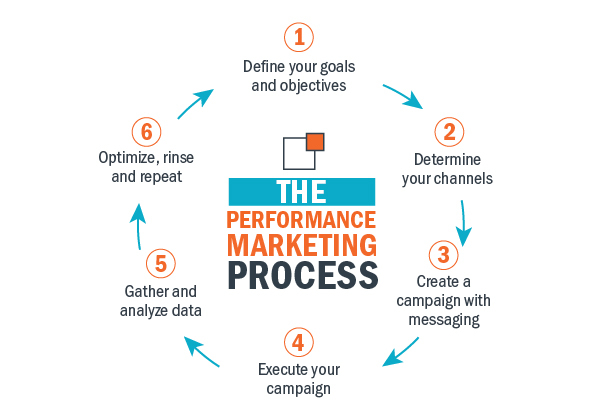
5. High Impact Mobile Advertising
One of the most common targets for performance marketing is mobile devices. They travel with their owners, as implied by their name.
They enable you to reach your customers wherever they are, 24/7. As a side effect, mobile advertisements are constantly bombarding the majority of audiences. Most consumers will put up an invisible wall and ignore every pop-up their phones present them with since it is sufficient.
They represent a fresh breed of captivating mobile advertisements. They increase engagement since they make use of all the features available on our portable touchscreens.
The most popular apps all thrill and entice consumers. High impact mobile advertisements use swipes, taps, and other interactive components to build on this strategy.
To cut through the visual clutter of the digital environment, they employ striking designs and deliberate movement.
Interactive concepts are created by mobile experience designers using information about your target market. They are placed in front of the appropriate audiences by means of advanced programmatic advertising strategies.
The high-impact mobile gallery from Kilowott shows some of the possibilities for a unique and thrilling experience these advertising may provide.
Full-screen adverts highlight the content and invite visitors to swipe left or right to find out more or press an icon to view a video.
Additionally, they can offer a “choose your own adventure” setting where visitors can choose which features or goods they wish to learn more about.
The format boasts great performance and offers plenty of room for customization. They are worth the effort because of their high engagement and click-through rates and precise targeting.
6. Video and CTV
High-quality, engaging video advertising has outstanding engagement. The video format is a powerful tool for increasing brand recognition and drawing viewers into the upper funnel.
Video ads perform best when they are placed programmatically, just like the other types of performance marketing.
They can be rolled before or after other video content, or you can embed them into a video. They could also be found in mobile games or display adverts.
Even stronger video ad performance is seen on linked TVs. Traditional network television advertising can’t compete with them in terms of performance-driven driving and smart targeting.
You may target particular users from the convenience of their own homes with a linked smart TV. CTV video commercials have a minimum completion rate of 90% when they are presented on premium streaming content.
7. Banner (Display) Ads
You have undoubtedly seen a lot of display adverts recently if you have been online.
These advertisements can be seen at the top or bottom of the news website you just visited, on the side of your Facebook newsfeed, or both.
A lot of businesses are still having success with display advertisements that make use of interactive information, videos, and interesting graphic design, even though display ads are gradually losing their attractiveness due to the rising prevalence of ad blockers and what experts call banner blindness.
8. Content Marketing
The main goal of content marketing is to inform your audience. In addition, it creates three times as many leads and costs 62 percent less than outbound marketing, according to OmniVirt.
With content marketing, the emphasis is on giving users helpful information and contextualizing your brand. A vitamin firm might, for instance, publish a series of educational blog entries about the advantages of probiotics that include a link to the probiotics they sell.
A channel for content marketing is one that includes blog articles, case studies, e-books, and other materials.
9. Social Media
Social media provides performance marketers with a refuge. Not only does it provide you the chance to connect with users and direct them to your website, but users can also naturally share your sponsored content with their networks, thus expanding the reach of the post itself.
The most comprehensive list of services for performance marketers is on Facebook, but other websites like LinkedIn, Instagram, and Twitter also provide lots of chances to expand your clientele.
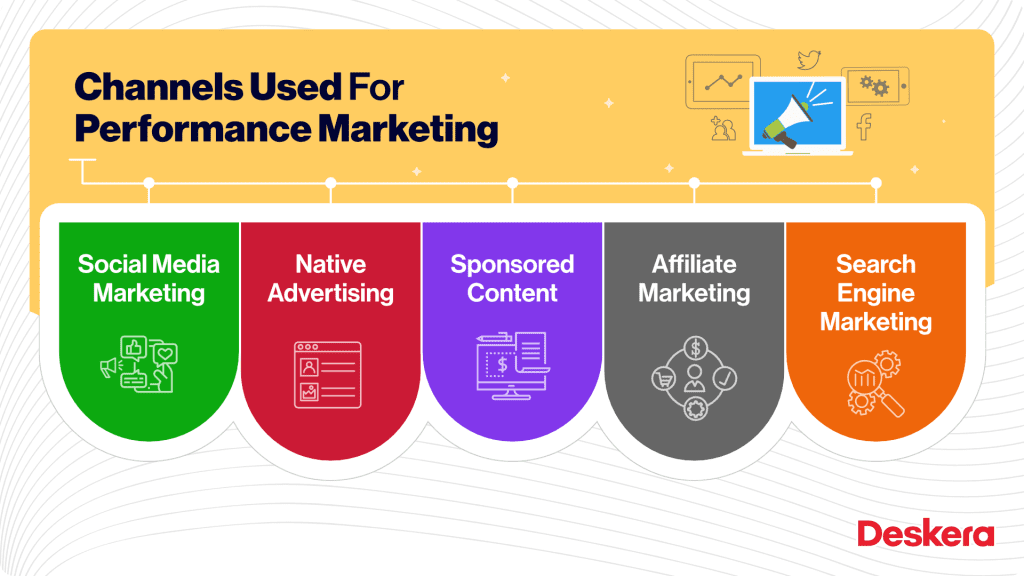
What are the benefits of performance marketing?
Performance marketing is the approach that advertisers adopt when it comes to efficient marketing that is centered on the return on investment (ROI). It encourages quantifiable outcomes and facilitates the tracking of metrics.
Here are the top five benefits of performance marketing:
1. Track Performance
Performance marketing has the advantage of being completely measurable. Kilowott measure views and clicks to get a complete picture of how your ads do across many platforms.
It also becomes much simpler to track ad expenditure and improve your media buy because you pay per impression or click.
In order to know how many views are required to produce one click, one lead, or other performance indicator that you want to track, you may then calculate a cost-per-action.
Digitalization of marketing has made the conversion process less mysterious. Traditional, linear TV advertising might be challenging to measure in terms of success, but performance marketing is different.
Performance marketing not only expands a marketer’s reach but also provides trackable analytics, allowing the marketer to immediately identify the indicators that are leading to conversions.
Being able to calculate ROI accurately is essential for marketers who are frequently challenged to defend their media expenditures.
2. Pay for Results
The last thing that marketers want is for their advertisement to go unnoticed. Even worse would be to target non-converting users.
Publishers who use programmatic advertising have an incentive to ensure that their ads are viewed by the intended audiences or else they risk losing their future ad placements.
Ads can therefore generate more targeted impressions while achieving higher conversion rates.
There is little chance of wasting advertising dollars because advertisers only pay for outcomes. Marketing professionals may be confident that they are paying for viewer interactions even if the cost-per-impression increases.
According to research by the Performance Marketing Association, performance marketing can yield a 12:1 return for marketers.
3. Connect With New and Hard-to-Reach Audiences
Social media, native ads, CTV commercials, audio ads, display ads, and search marketing are just a few of the many formats that performance marketing offers.
These let you access new markets by exposing your brand to the users of each site.
Viewers who block or ignore most online adverts can access content that has been filtered by reputable publishers and the channels that your consumers use most frequently.
A trading desk can help advertisers post their adverts on various websites and online publications. Therefore, you can considerably increase your reach.
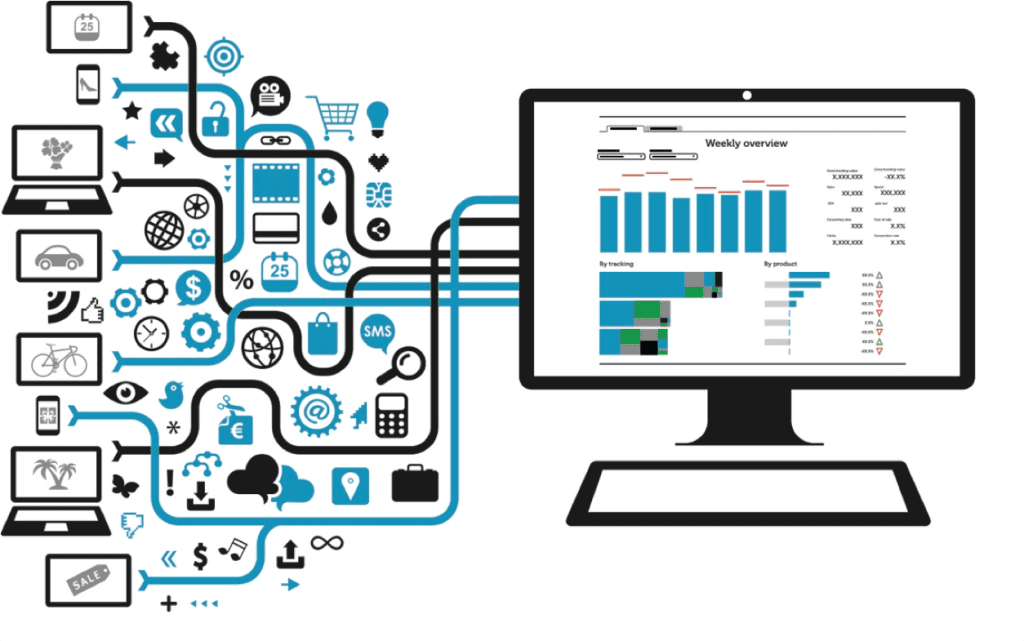
4. Optimize Campaigns as They Progress
You can track performance in real-time thanks to the digital nature of performance marketing.
Therefore, you can change advertisements as a campaign progresses. You may see where adverts perform well and put more emphasis on those platforms by placing advertisements in various places across numerous channels.
Mid-campaign, if you see one tagline works better, you can adjust the others to match.
Depending on the parameters you’ve selected, the publisher will optimize your ad placement.
For instance, if the bid satisfies the criteria, a search engine will display an advertisement enough times to get the desired amount of clicks over the campaign’s duration.
5. Budget Effectively
Prior to launching a campaign that is performance-driven, marketers must create targets.
So, it becomes simple to plan for these commercials. While each platform’s bidding system may operate differently, the majority of them will request an ideal cost per impression and a target for total impressions.
Even if the pricing may vary from the ideal during the course of a campaign, this approach makes it simple to predict and monitor spending. Numerous services also let you set a spending cap.
Using performance marketing channels can help you scale your advertising efforts to suit the needs of your organization without breaking the bank, especially as the future of performance marketing becomes more promising every year.
Performance marketing is an innovative and efficient approach to broaden your audience and your reach while also gathering important data.
The advantages don’t end there, either. You’ll discover it’s simpler than ever to expand your organization when you embrace the entire functionality of performance marketing, from native and affiliate advertising to sponsored social media content.
Which is the best performance marketing strategy?
The relevance of performance marketing is only increasing. Online time usage is increasing, and performance marketing continues to receive more of the marketing budget.
It is simple to go into execution mode and just start acting when there are so many opportunities in performance marketing.
One of the best methods to increase your digital return on investment is to invest in your strategy.
A well-defined approach cuts down on waste, gives your job more concentration, and builds on what is already effective.
Here’s how to create a solid performance marketing strategy:
1. Explore the landscape and analyze your results.
An effective approach begins with research and analysis. This helps you obtain a better grasp of your starting place, how you compare to your competition, and your target market.
• Examine how you performed. Analyze your performance over the previous year to start. Analyze your data to find out what worked and what didn’t, and why.
• Consider your rivals. Take some time to research the online presence of your rivals. The beautiful thing about internet marketing is that since everything is out to the public, it is simple to observe what your rivals are doing. Get a free study of their strategy by using competitive research tools like SpyFu.
• Become familiar with your clients. You can utilize Facebook Audience Insights, a free service provided by Facebook, to learn more about the size, demographics, activities, and interests of your audience. Another free tool to view popular search terms and historical search patterns is Google Trends.
2. Map out your strategy.
Create a clear plan of action based on your objectives and preferred methods. You can coordinate your plan by using the GSOT strategy framework, which stands for goals, strategies, objectives, and tactics.
• Your high-level objectives are your goals. For instance, it can be to increase sales by 5% or to get 200 people to sign up for an event.
• A strategy is the method you’ll employ to accomplish your objectives. This is typically described by the marketing funnel stages; you can decide to concentrate on awareness, interest, desire, or action.
• Objectives are measurable numbers that link to your goal. For example, if I want to grow sales by 5% this year, I may have an objective of establishing 200 leads or reaching 400 people.
• Tactics align with your objectives. For example, if I need 200 leads, I may use a landing page with a webinar and social media to entice prospective new clients.
You can concentrate your efforts on the areas most likely to stimulate business success by developing a clear strategy.
There are many things you could do in performance marketing; the difficult part is picking which ones to perform.
3. Define your target audience.
You have the chance to implement campaigns with extremely fine targeting in performance marketing.
Consider targeting demographics that aren’t typical and be as specific as you can. To truly understand your ideal consumer, create buyer personas for them.
4. Build your content strategy.
Create a content plan based on your marketing goals and your target audience. This should indicate the key subjects or content categories that will be covered in your execution.
Here are five ways to get content inspiration:
• Return to step one and seek inspiration from a study of your competitors and target market.
To see the queries people are typing into search engines, visit Answer the Public.
• Use Instagram’s hashtag search to see what is popular. Instagram is an excellent place to get inspired content because it is very visual.
• Review the Google Search results. This demonstrates the terms people are looking up in relation to your category.
• Look through Pinterest, which is a wealth of popular, eye-catching content.
5. Choose your channels and tactics.
Choose the channels that are most likely to produce the best results for you after you are aware of the content that appeals to your audience.
Think about all the digital platforms, resources, and strategies you might employ. Following that, prioritize according to the plan you developed in step two. Consider how each channel helps you achieve your target and goal.
6. Set key performance indicators and benchmarks.
Too frequently, firms begin their execution but find it difficult to determine whether they are actually seeing benefits.
Every investment you make should have a defined KPI that serves as your yardstick for success.
Set benchmarks after that. Your goal serves as your baseline. For instance, in email marketing, my KPI might be email open rate, with 25% or above serving as a benchmark.
7. Execute with best practices.
The devil is frequently in the details. You can discover that you aren’t receiving the outcomes you were hoping for if you skip any executional procedures. Spend some time making sure you are adhering to best practices.
Performance marketing is constantly evolving, so strategies that were successful one year may not be effective today. Remember that doing a few things well is preferable to doing many things poorly.
8. Analyze and adjust.
The flexibility to change course and make adjustments is one of the things that makes performance marketing so effective. You are not required to make and follow a set plan.
For instance, halt a campaign and test different creative if it isn’t producing results.
Run an A/B test with various calls to action if your website isn’t converting visitors. For instance, you can compare the performance of a “sign up now” call to action and a “learn more” call to action.
With performance marketing, it might be simple to get caught up in methods because you probably hear about new strategies or technologies every week.
To improve your results, develop a clear plan and maintain focus. A laser-focused strategy is having a clear understanding of how each component of your plan will advance your goals and your company.
Performance Marketing FAQs
Q1. What is performance-based marketing?
An outcome-driven performance marketing approach is performance-based marketing. Due to the fact that payments are provided to marketing service providers only after the business objectives, such as a click, sale, or lead, have been achieved, it is appropriate for brands that want to reach their audience at scale.
Q2. Is performance-based marketing a scam?
Performance Marketing is not a scam and is legitimate. It is a very profitable sector for businesses. It is possible that an advertiser will charge you fees based on performance and just use the money for brand bidding and retargeting.
Q3. What are the benefits of performance-based marketing?
Utilizing performance marketing channels, you can grow your advertising efforts and efficiently match the needs of the business. It works well for broadening your audience. By implementing a trackable and controlled plan, you may increase your reach and gather crucial data.
Q4. What is the role of performance marketing?
Customer acquisition and retention are two primary goals of the internet marketing technique known as performance marketing. It results in quantifiable user emotions or transactions, promoting corporate growth.
Q5. Should I implement a performance marketing plan?
Implementing a performance marketing plan will help you reach out to your target market more quickly if you are just starting out in business.
You’ll benefit from increased website traffic and affiliate brand recognition. Performance marketing is also measurable and transparent.
You can evaluate which channels deliver greater results by viewing the entire click-to-consume journey of each buyer. The absence of a prepayment is very crucial. Consequently, the risk is smaller.
Q6. What is the difference between performance marketing and digital marketing?
Digital marketing that uses performance marketing only charges you when a specific result materializes. The word “digital marketing” is inclusive of many different channels, payment methods, and techniques.
Q7. Can I do performance marketing myself, or should I hire outside resources?
Performance marketing can be done independently by any business, provided they have the resources (in-house marketing team size, cash, knowledge, and bandwidth) to do so. It would be advisable to use reliable outside resources if not.
Q8. What is the difference between performance marketing and brand marketing?
In a performance marketing programme, marketers pay marketing firms only after a particular action, such a sale or lead, has been completed.
Brand marketing, on the other hand, focuses on promotional strategies that include customers and work to enhance positive consumer impressions of the brand.
How can Kilowott help as a performance marketing service provider?
Do you need an omnichannel performance solution that was created for you specifically? When you cooperate with us, your performance in search, social media, and Amazon will increase by 5% to 20%.
At Kilowott, we want to give you total visibility into the effectiveness of your ads and support you in connecting with your audience across all media. We mix the best programmatic advertising and performance marketing tools with smarter targeting.
We provide a clear idea of how your campaigns are doing in terms of the numbers. Throughout each stage of your campaigns’ lives, we’ll manage them to achieve the best results.
Which are the top Performance Marketing companies in the world?
1. Disruptive Advertising
The focus of Disruptive Advertising is to create a results-based relationship with their clients. For this reason, they really make it their mission to understand the business goals of their clients.
At Disruptive, they’re passionate about building lifelong relationships on a foundation that starts with your marketing and business results.

2. Kilowott – A Performance Marketing Company
Kilowott is a boutique business experience (BX) transformation firm accelerating growth for businesses of all sizes across industries by reimagining the way businesses operate and crafting digital experiences with the user at the core.
Kilowott’s design heritage coupled with their digital transformation expertise and deep focus on user experience helps them stand apart from the crowd. All their business experience transformation engagements focus on enhanced digital customer experience while driving up business profitability.
Kilowott’s performance marketing specialists have extensive experience in Google Ads, Facebook Ads, Instagram Ads, TikTok Ads, Snapchat Ads, Programmatic Ads, SEO, SMM, SEM, and content writing, thereby delivering results, throughout the world. They assist you in developing a voice that stand out in a sea of digital marketing services.

3. Thrive Internet Marketing Agency
Based in Vancouver, Canada, Thrive Digital is a performance marketing agency that has been helping businesses to plan, implement, and optimize digital marketing campaigns since 2011. They’ve helped a number of big global brands like Snapchat, Uber, and Salomon to grow online.
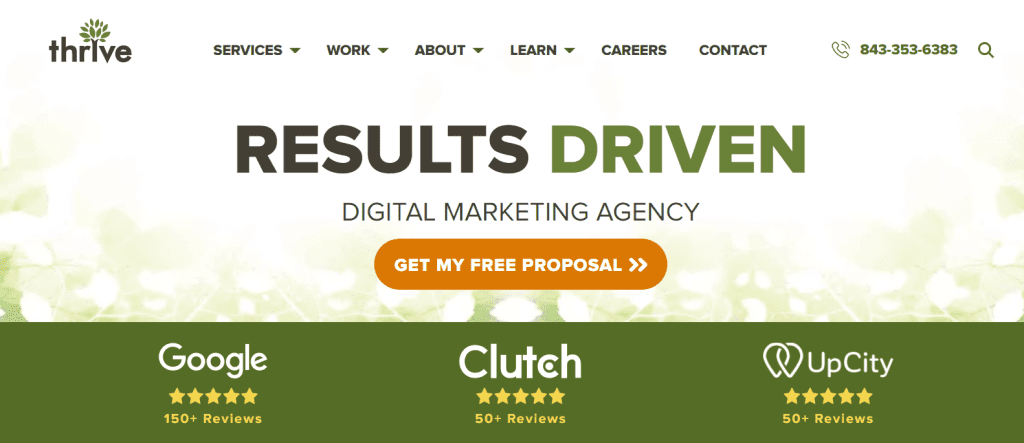
4. Grovia
As mentioned in the intro, affiliate marketing forms part of performance marketing. If you’re interested specifically in going the affiliate marketing route, be sure to check out Grovia.
In short, Grovia is a partner recruitment platform that helps businesses to identify, recruit, and activate influencers and affiliates.
With the help of their search engine, it’s much easier to discover suitable candidates that can help you to generate more revenue. They can also provide managed services in addition to their software platform.
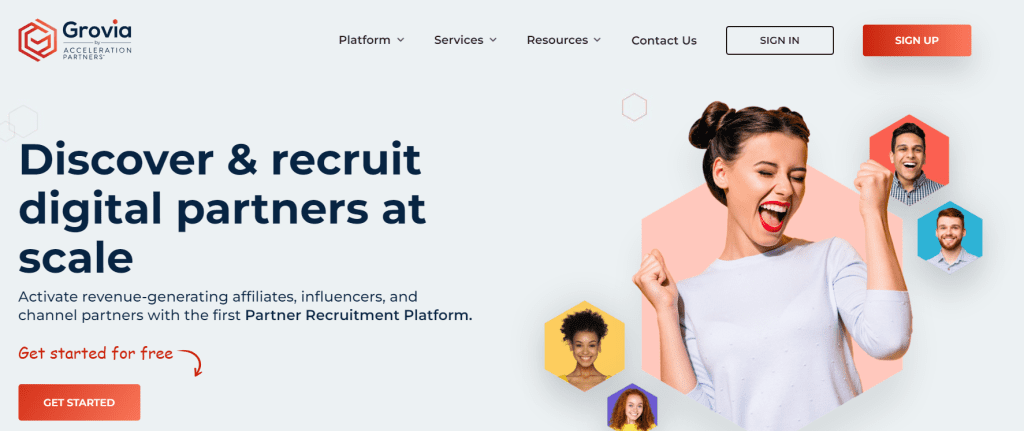
5. Hamster Garage
Founded only in 2019, Hamster Garage is one of the newer performance marketing agencies on our list. While they might have been in business for only a few years, they’ve already worked with a number of well-known brands that include names like Airbnb, Turo, and Canva.
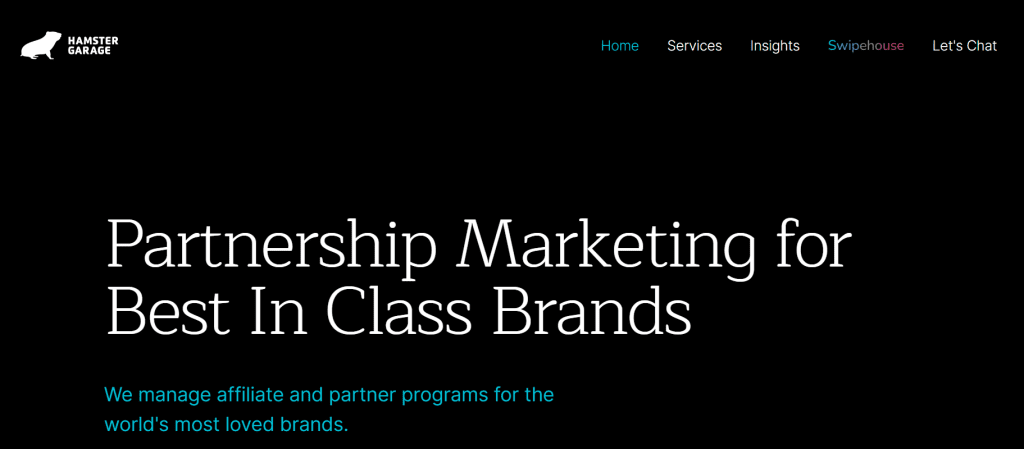
6. yellowHEAD
Yellowhead is an AI-powered agency that facilitates growth through proprietary artificial intelligence and data science. The agency provides all performance marketing capabilities, so you won’t need to hire multiple vendors or spend large amounts on separate entities to get the results you need. They offer a full range of services, from paid campaigns, organic SEO, app optimization, and creative services.
Yellowhead has worked with clients from gaming, eCommerce, fintech, health and wellness, and retail, to name a few. Their teams in New York, Tel Aviv, and Europe have given brands a firmer footing in their digital marketing presence.

7. AdQuantum
As one of the leading performance marketing agencies, AdQuantum specializes in helping apps to generate new revenue. Their team of 30 media buyers and over 300 designers have helped loads of clients to increase their revenues and app downloads. For example, for the Dragon Champions game they managed to generate 27,000 paying users in nine months.

8. JumpFly
If you specifically need help with Amazon marketing, JumpFly is one of the top agencies to check out. They’ve been in the business for nearly two decades and specialize in PPC marketing.

9. WebFX
WebFX’s team of more than 450 experts is one of the biggest performance digital marketing agencies across the globe. With offices in multiple cities across North America, they’ve worked with big guns like Bing, Google, and Facebook. When you work with WebFX, you’ll have access to MarketingCloudFX, their top marketing software platform, helping you to keep track of all the details (even the minor ones) of your campaign.

10. Kobe Digital
Based in Los Angeles, Kobe Digital’s team specializes in performance marketing, video production, and design. For example, they helped Phillips Graduate Institute to create a diversified, omnichannel campaign so that they could reach potential students across a bigger range of platforms. Not only do they work with educational institutions, but they’re regarded as one of the top eCommerce marketing agencies that can help you to boost your brand.

11. Acceleration Partners
In 2021, Acceleration Partners won two International Performance Marketing Awards. Not only were they named the best performance marketing agency, but their use of performance during COVID-19 also bagged them an award. As a premier global partner marketing agency, they’ve helped industry-leading brands, like Adidas and LinkedIn, to grow and refine their digital marketing strategies efficiently.
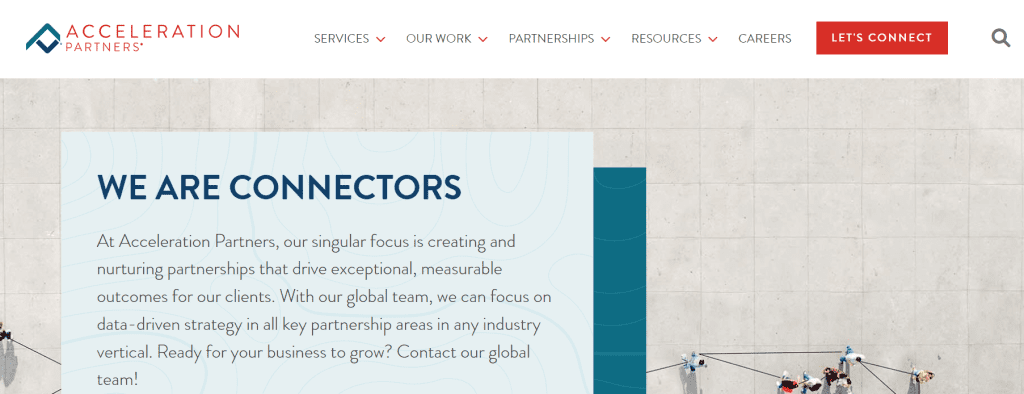
12. Ignite Visibility
Ignite Visibility is one of the top performance marketing agencies and specializes in a number of services that include multichannel digital strategy, email marketing, paid media, and search engine optimization. Based in San Diego, they’ve been in the business for nearly a decade and use an award-winning proprietary digital marketing forecasting system to help their clients achieve their goals.

13. WebMechanix
WebMechanix is a leading performance marketing agency that helps mid to large businesses boost their bottom line.

14. Directive
If you’re a SaaS company in need of a performance marketing agency, you can check out Directive. They’ve worked with more than 200 leading SaaS companies that include names like Cisco and Samsung SDS. What sets them apart from many other agencies is their strong focus on communication. Weekly call-ins mean that you’ll always be up to speed with what’s happening.
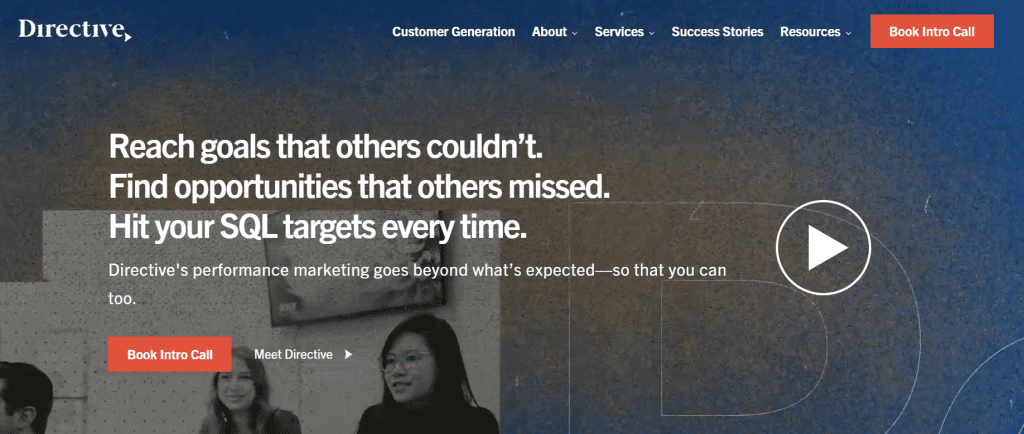
15. Tinuiti
According to their website, Tinuiti is the biggest independent performance marketing agency across Google, Facebook, Amazon, and streaming TV. Their team of over 1,000 employees has worked with brands like Etsy, Converse, and the Vitamin Shoppe. As one of the top social media marketing agencies, they can help you with an array of services that include email marketing, Amazon advertising, app store optimization, and conversion rate optimization.
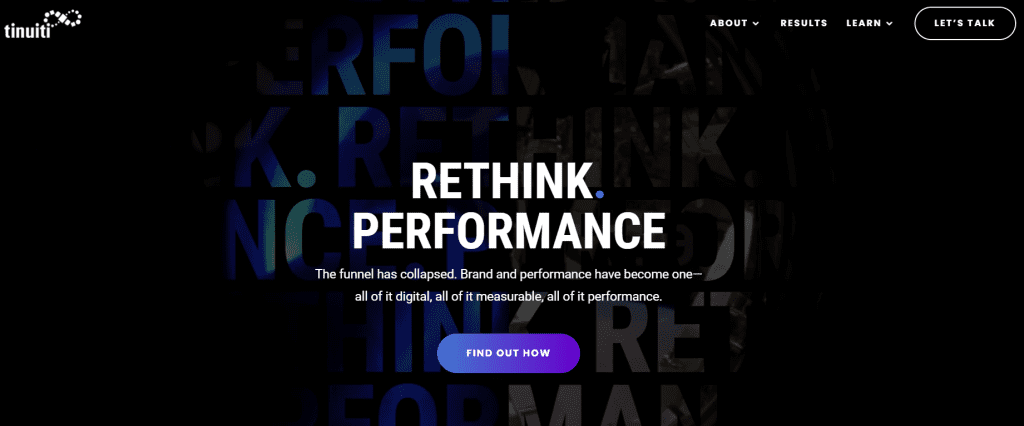
16. DMi Partners
Based in Philly, DMi Partners is regarded as one of the top email marketing firms and offers a wide range of other services that include affiliate marketing, paid search, and search engine optimization to mention only a few. As a performance marketing agency, they include a dynamic pricing model that’s based on certain performance tiers being reached.

17. Perform[cb] Agency
In 2021, Perform[cb] Agency (previously called IgniteOPM) was shortlisted by the International Performance Marketing Awards for Best Performance Marketing Agency. Founded in 2002, they also offer a CPA network that has been voted the best in the world for five consecutive years, according to their website.

18. Performics
Performics create personalized, dynamic media and content experiences that will match the mindset of your consumers. Founded more than 20 years ago, Performics describes themselves as the original performance marketing firm on their website.

19. Rogerwilco
With offices in Cape Town and Johannesburg, Rogerwilco is South Africa’s leading performance marketing agency. Founded in 2008, they’ve won more than 30 awards and are also the first-ever African finalist in the global DigiDay content marketing awards.
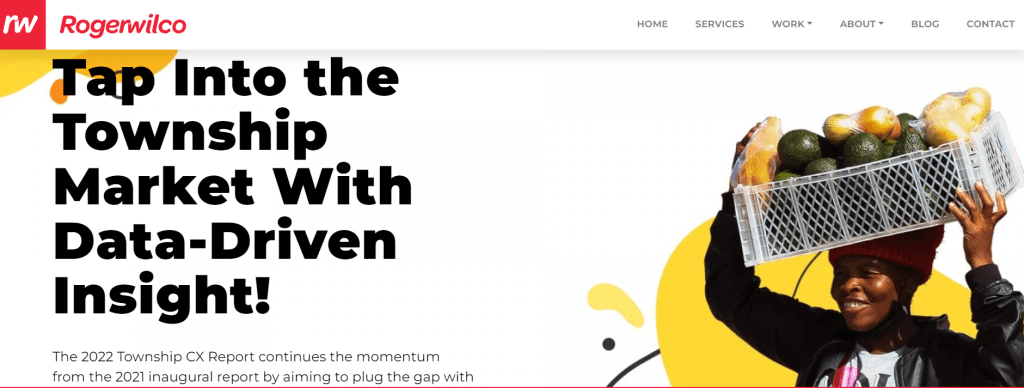
20. MuteSix
If you specifically want to focus on TikTok marketing campaigns, be sure to check out MuteSix. According to their website, they’re the first agency to partner with TikTok. In addition to TikTok, they can also help you to craft marketing campaigns for all the major platforms like Facebook, Instagram, YouTube, Snapchat, and Pinterest. Founded in 2013, they work with clients across a wide range of industries that include tech, financial services, eCommerce, retail, and publishing.

21. Obility
B2B businesses can check out Obility. Their team understands B2B and can help you to acquire and convert MQLs, SQLs, and named accounts.
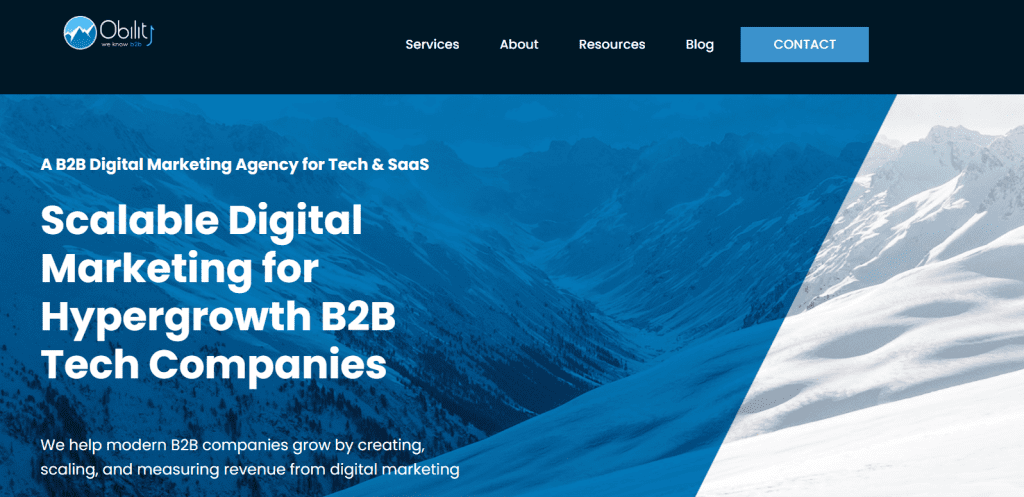
22. AdParlor
AdParlor’s agile performance marketing approach is best suited for eCommerce brands and subscription and service-based businesses. In 2019, AdParlor was acquired by Fluent, Inc., a leading performance marketing company in the US.
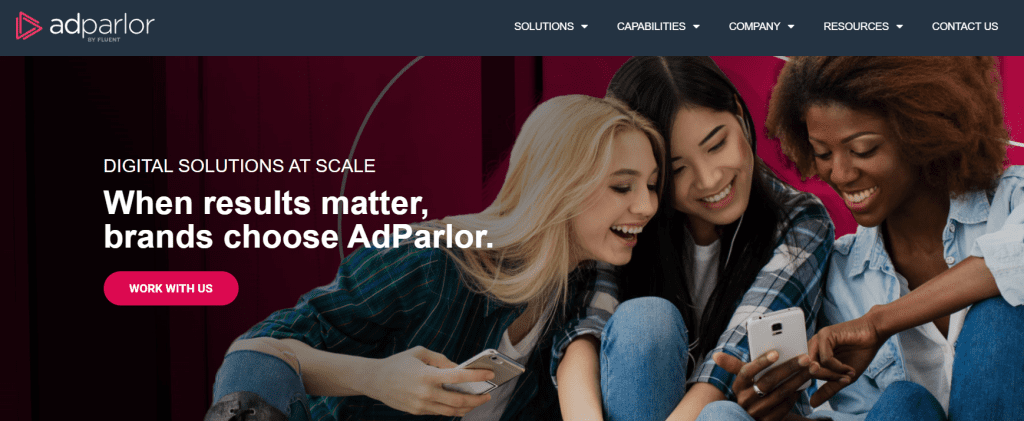
23. iProspect
iProspect works with established, challenger, and emerging brands. Their team of more than 8,000 experts offers first-class services and solutions in media and customer experience management. Some of the brands that they’ve worked with include Under Armour and Budweiser.

24. PartnerCentric
PartnerCentric describes themselves as the biggest fully remote performance marketing agency with Women’s Business Enterprise (WBE) certification across the world. Not only do they have premium partnership status with some of the leading performance marketing tech platforms, but have also fostered relationships with a number of the biggest performance marketing networks like CJ Affiliate and ShareASale.
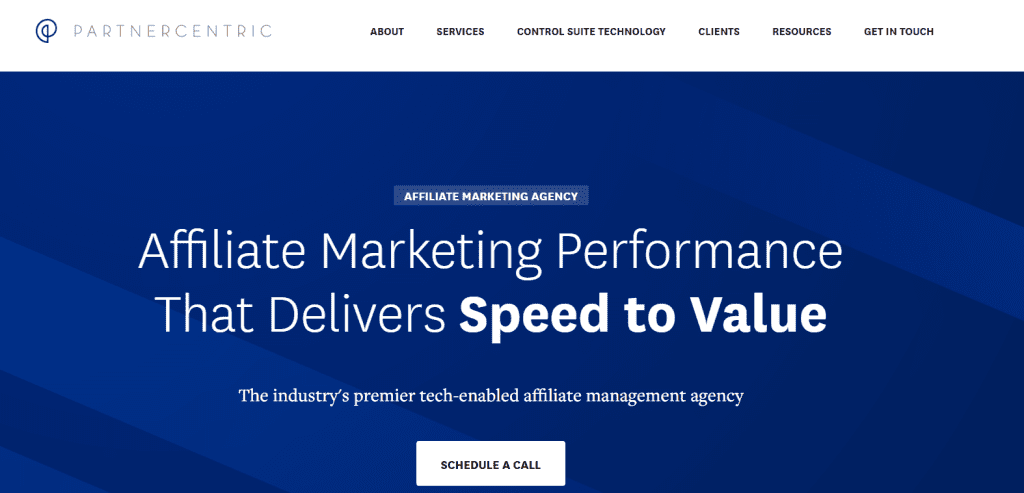
25. Sparxoo
Based in Florida, Sparxoo is an award-winning fully integrated digital marketing agency. Sparxoo’s team of Google Certified performance experts will help you to connect with customers with the right channel to get the most of your budget.

Need help with “results-based” marketing that can help your business grow ? Let’s talk!






